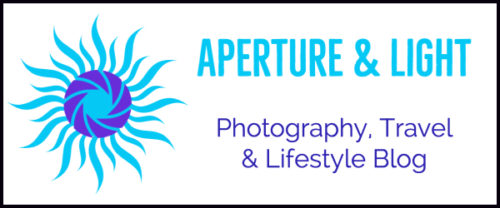Photographing fog and mist. Make the most of magical moments while the earth is blanketed with a light, misty fog. As the sun rises, delicate hazes float upwards before evaporating right in front of our eyes. Timing is crucial and we need to work fast.
Backlit, side lit or light coming from behind you, each angle of view offers stunning effects.
In the featured image above, the morning light glowed through the rising mist in the distance. The contrasting, strong foreground of purple summer flowers invites the viewer to relax and enjoy.
Below, a simple leading line of light gently pulls you to the setting sun.

Harnessing the Light & Artistry
As fog can be deceptive to the naked eye, fog will also deceive the lens. Diffusion of light happens due to the air being full of water particles. With diffusion of light, the amount of light (or reduction of light) may require longer exposure times.
As a result of the water particles in fog, it’s also reflective. Your camera’s meter may see more light than what is actually there. The result? Returning home with too many underexposed foggy images. Therefore, taking many images with a variety of exposure settings gives more options in post processing.
Artistry happens when you harness the light to convey your own misty story. How do you want your viewer to feel? What do you want the viewer to see? Fog as a standalone subject is, well, foggy. Fog, as strong element of your image, frames your subject with mood and ambience.
Photographing Fog: Texture & Mood
From light and filmy to thick and haunting, fog’s density creates the overall feeling of an image. On cool summer mornings, misty mornings are refreshing. Conversely, in dark settings, a sense of mystery emerges.
- Smooth and milky fog – Longer shutter speeds creates smooth, flowing mist. The longer the shutter speed, the more dense the effect.
- Fog with texture – Faster shutter speeds separates fog from the surrounding air. Shapes, density and movement stops. The black and white below was taken with 1/250 second shutter speed.

2 Tools
- Since you’re working with a variety of shutter speeds, a tripod gives more stability for your long exposures.
- Your camera’s exposure delay mode or a remote cable release reduces shutter shake and improves image sharpness. With exposure delay mode (Nikon), your camera delays the start of each exposure until after the mirror has been raised and vibration has reduced. You select the amount of delay time from the menu. Other camera manufacturers may have a similar option built in to a timer delay as well.
Foggy mornings are shifting and fleeting. Using short and long shutter speeds promotes post processing diversity and fun.
Interested in working with an art lens? Lensbaby Velvet creates buttery, dreamy images.


2 comments
Very helpful, and inspiring! Love the shot of the foggy lake.
Thank you very much Ed! Here’s to a great new year!
Comments are closed.